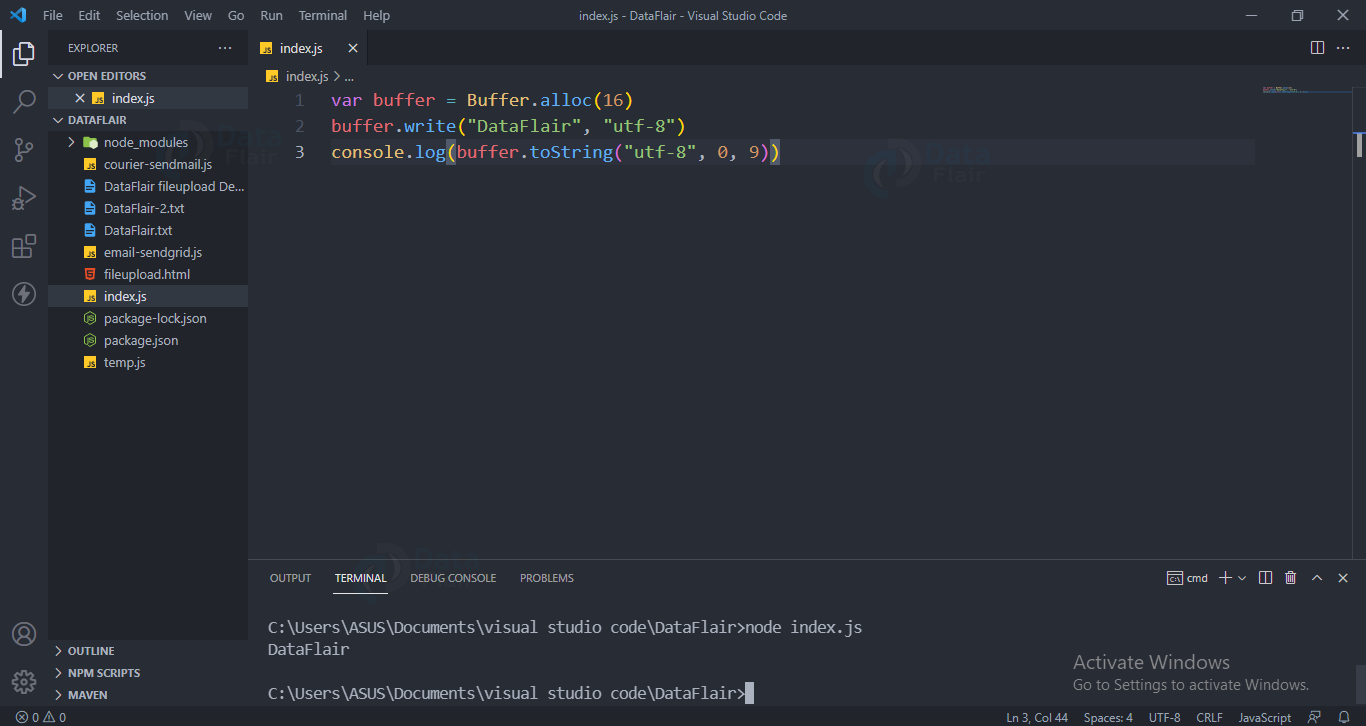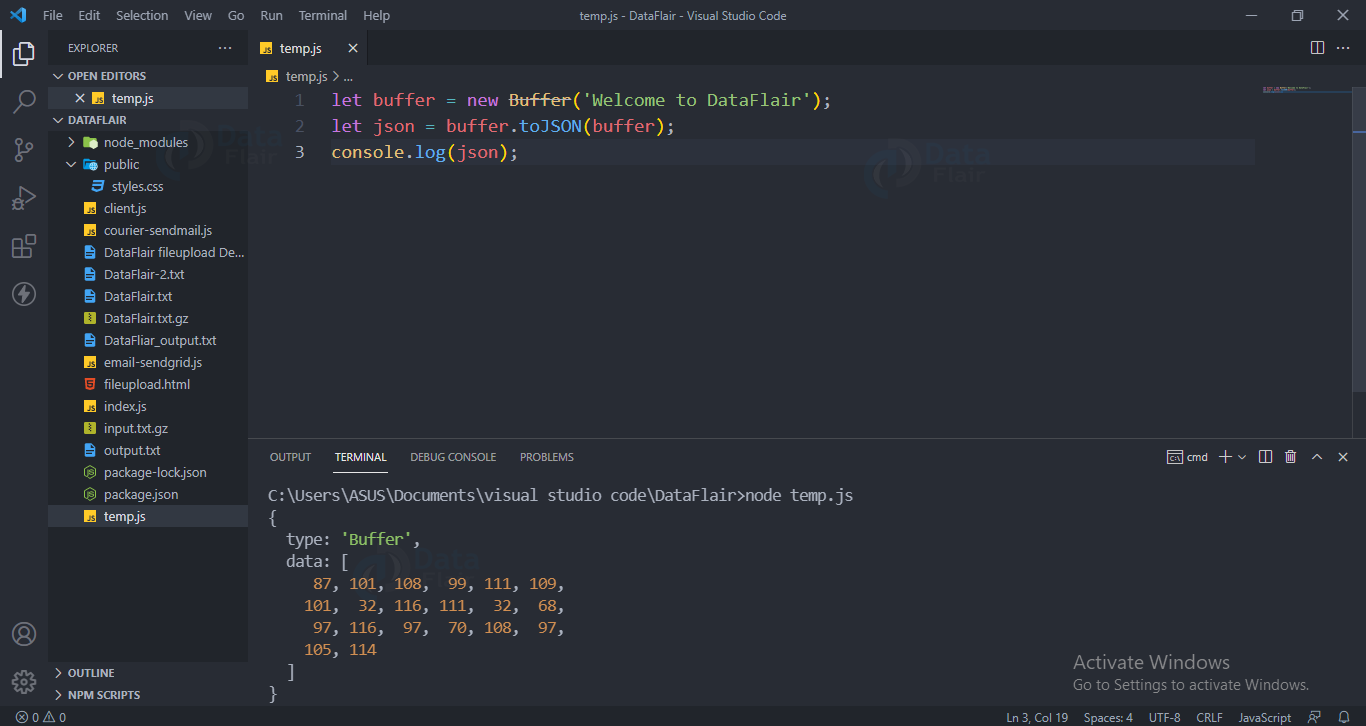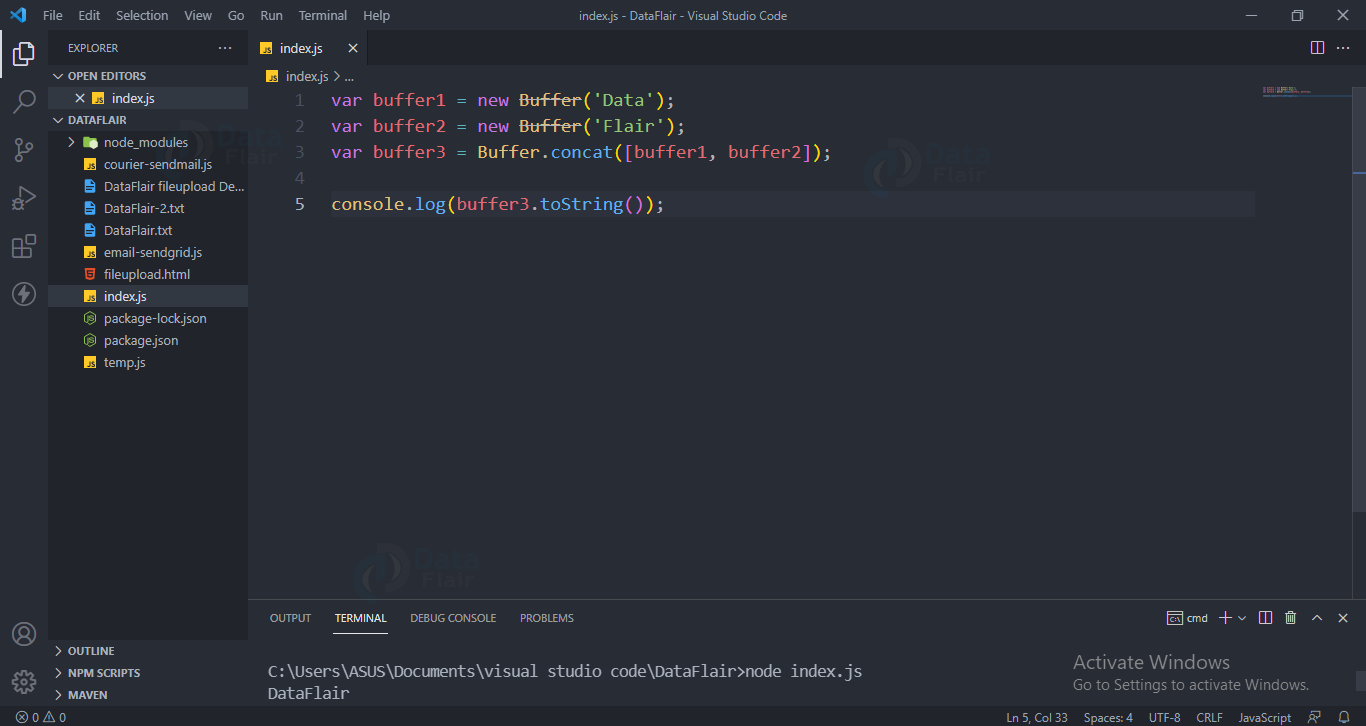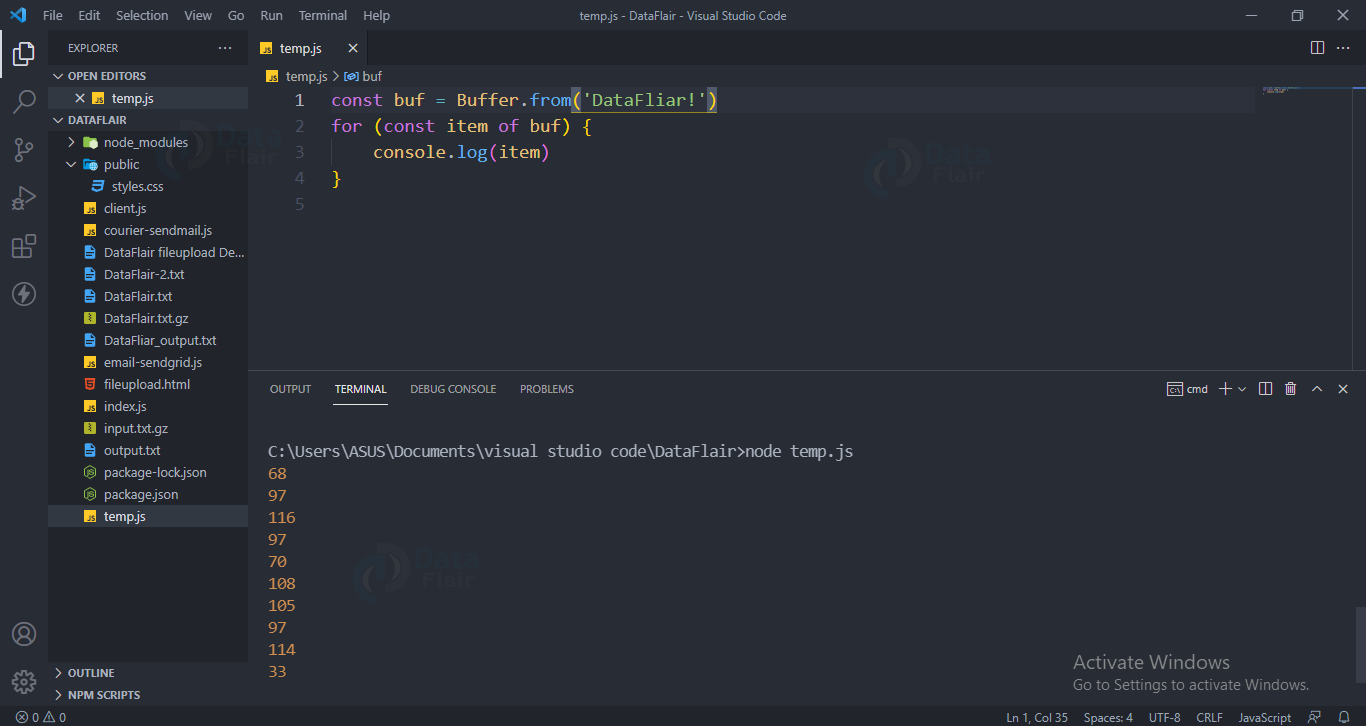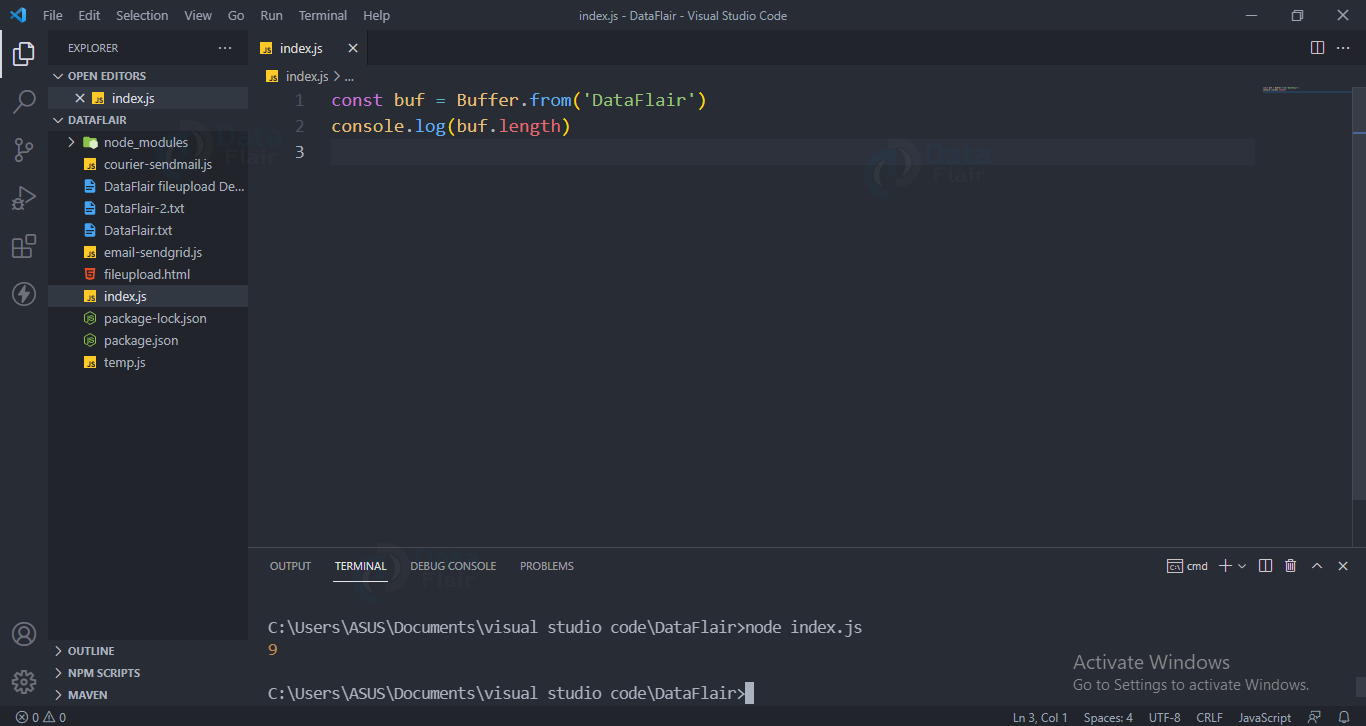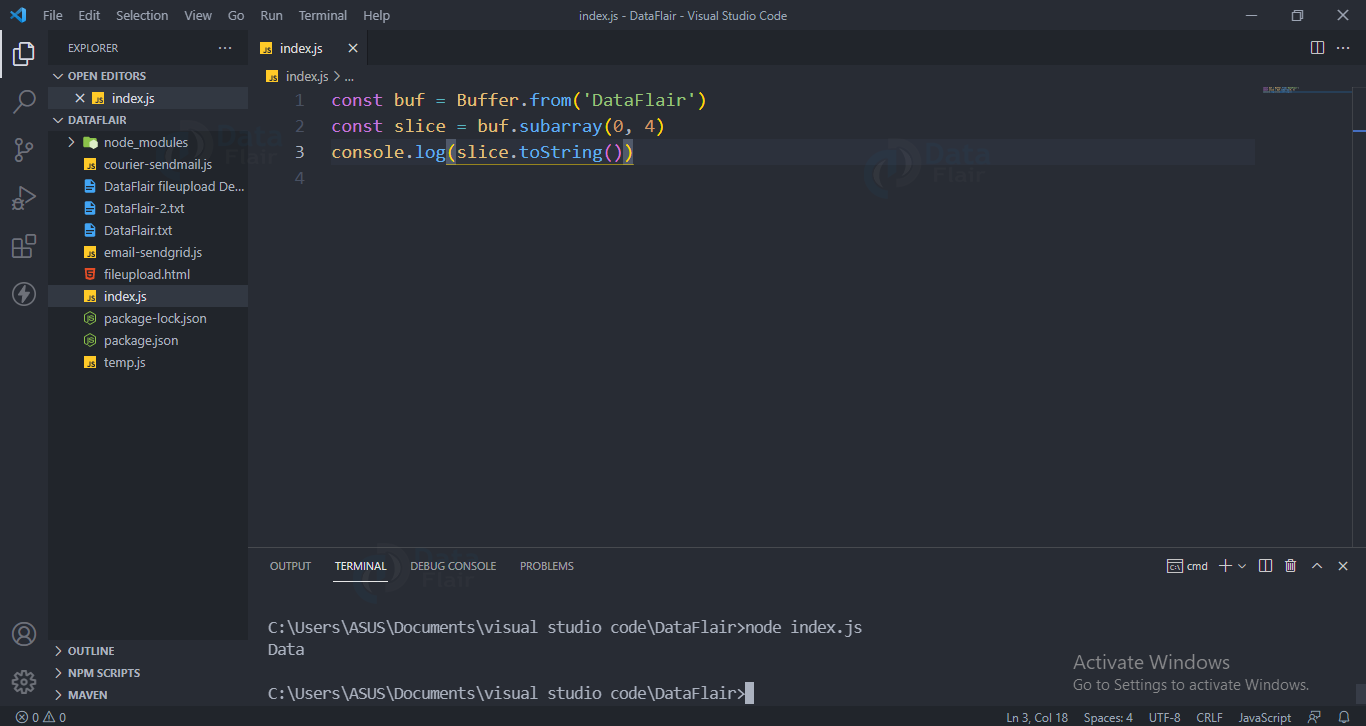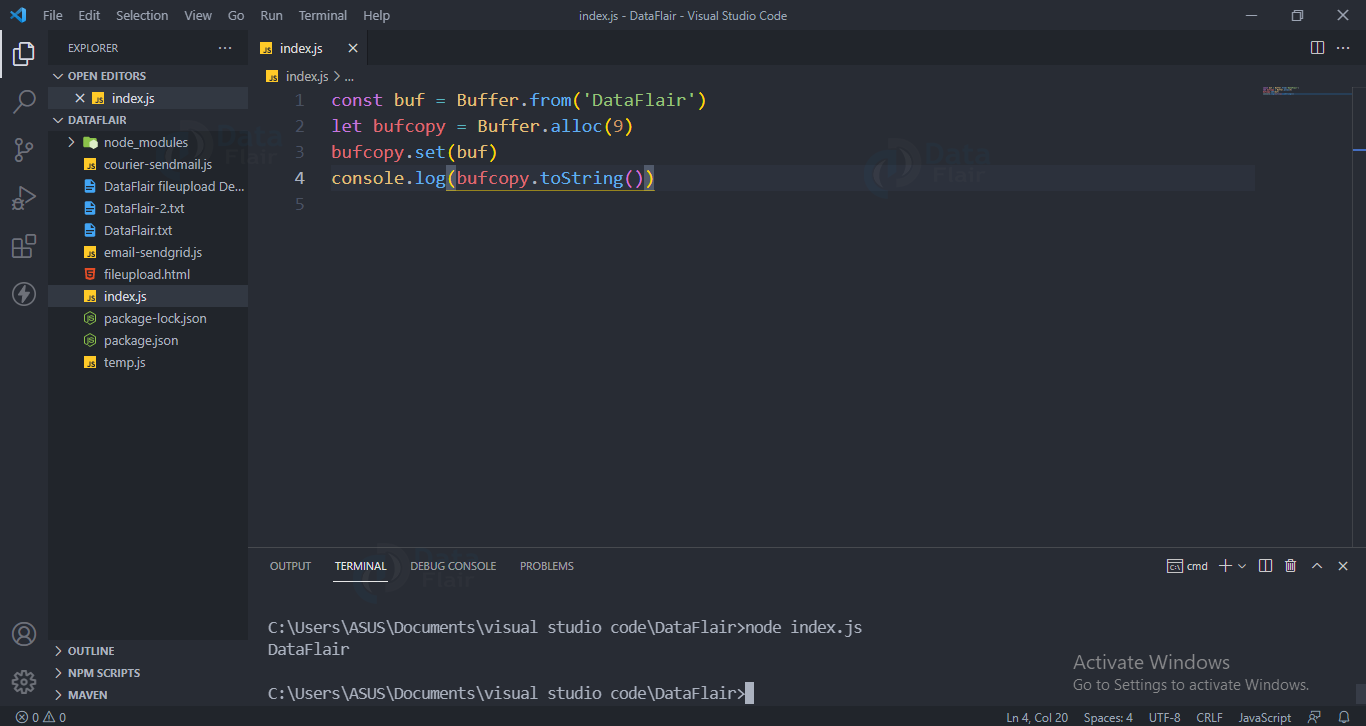Nodejs Buffers
FREE Online Courses: Enroll Now, Thank us Later!
Today we will be discussing Nodejs buffers and their properties in detail with code and examples.
Nodejs Buffers:
It is an area of memory present outside the v8 javascript engine. It is of fixed size. This is like an array where each item is in bytes.
Why use a buffer in Nodejs?
Normally we deal with string data types but in order to deal with binary data types efficiently we have to use buffer.
Creating Buffers in Nodejs:
In order to store something on buffer we have to first create a buffer. Below are different ways for creating Buffer:
1. Creating a buffer of size 10 octets which is not initialised
Syntax:
var buf = Buffer.alloc(10);
2. Creating buffer for the given array
Syntax:
var buf = Buffer.from([10, 20, 30, 40, 50]);
3. Creating buffer for the given string with encoding:
Syntax:
var buf = Buffer.from("DataFlair", "utf-8");Writing to Buffers in Nodejs:
Now we will look at how to store our data in a buffer. Below syntax shows how we can write to a buffer.
Syntax:
buf.write(string[, offset][, length][, encoding])
Parameter:
- string : It represents the data that has to be written in the buffer.
- Offset: This represents the index from where the writing will start.
- Length: It represents the number of bytes.
- Encoding: It represents the type of encoding, by default it is “UTF8”
Return value:
It returns the number of octets written. Example of writing to buffer:
buf = new Buffer(256);
len = buf.write("DataFlair");
console.log(len)Output:
9
Reading from Nodejs Buffers:
In order to read the data store in our buffer we will be using the below syntax:
Syntax:
buf.read([encoding],[, start],[, end])
Parameter:
- Encoding: It represents the type of encoding, by default it is “UTF8”
- Start: It indicates the index from which reading will start.
- End: It represents the index till which it has to read.
Return value:
It returns the string from the buffer.
Example of reading from a buffer:
var buffer = Buffer.alloc(16)
buffer.write("DataFlair", "utf-8")
console.log(buffer.toString("utf-8", 0, 9))
Output:
Buffer to Json:
To convert the buffer data to a json format buffer.toJSON() method is used.
Syntax:
buffer.toJSON()
Return type:
It returns a json value for the given buffer.
Code for converting buffer to json:
let buffer = new Buffer('Welcome to DataFlair');
let json = buffer.toJSON(buffer);
console.log(json);Output:
Concatenate Buffer:
It is used to concatenate two buffers together to make a single buffer. Below is syntax for doing the same.
Syntax:
Buffer.concat(list[, totalLength])
Parameter:
- List: It is the list of buffers that will be concatenated
totalLength: Represents the total length after concatenation - Return value:
Returns the concatenated buffer.
Example of concatenating buffers:
var buffer1 = new Buffer('Data');
var buffer2 = new Buffer('Flair');
var buffer3 = Buffer.concat([buffer1, buffer2]);
console.log(buffer3.toString());
Output:
Iterating over a buffer:
In order to iterate a buffer use a for loop which you use in javascript.
Code for iterating over a buffer
const buf = Buffer.from('DataFlair!')
for (const item of buf) {
console.log(item)
}
Output:
Length of Buffer:
To get the length of the buffer that you have created use the buffer.length() method. It will return a number representing the length of the buffer.
Code to know the length of buffer
const buf = Buffer.from('DataFlair')
console.log(buf.length)
Output:
Changing contents of Nodejs buffers:
When we want to edit our buffer we treat it like an array and replace the content in the same way as we do incase of arrays.
Code for changing the contents of buffer
const buf = Buffer.from('DataFlair')
buf[0] = 100
console.log(buf.toString())
Output
Slicing buffer in Nodejs:
Slicing is used when we want to get a particular part from our buffer.
Code for Slicing the buffer:
const buf = Buffer.from('DataFlair')
const slice = buf.subarray(0, 4)
console.log(slice.toString())
Output:
Copy Nodejs buffer:
To copy data from one buffer to another we make another buffer of the same size and then set the content of the buffer.
Code for Copying a buffer:
const buf = Buffer.from('DataFlair')
let bufcopy = Buffer.alloc(9)
bufcopy.set(buf)
console.log(bufcopy.toString())
Output:
Compare Nodejs buffers:
To compare one buffer with another we use the buffer.compare method.
Syntax:
buffer.compare(‘anotherBufferName’)
Code for Comparing Nodejs buffers:
let buffer1 = new Buffer('Hello from DataFlair');
let buffer2 = new Buffer('Welcome to DataFlair');
let result = buffer1.compare(buffer2);
if (result < 0) {
console.log(buffer1 + " comes before " + buffer2);
} else if (result === 0) {
console.log(buffer1 + " is same as " + buffer2);
} else {
console.log(buffer1 + " comes after " + buffer2);
}
Output:
Methods Reference:
Comparing buffer:
To compare two buffers we use the buffer.compare(buf1,buf2)
isBuffer:
To know whether the given object is a buffer or not we use the buffer.isBuffer(obj) method.
isEncoding:
It returns true if the encoding provided is a valid encoding.
Summary
In this article, we discussed Nodejs buffers and their different properties. Hope you liked the article.
You give me 15 seconds I promise you best tutorials
Please share your happy experience on Google
